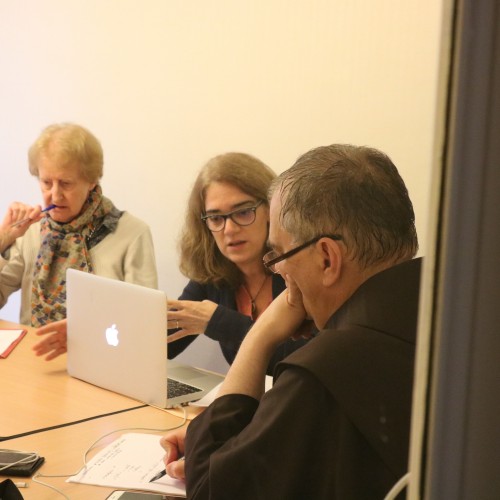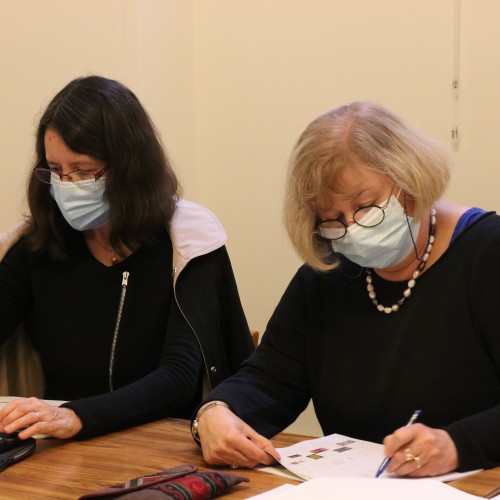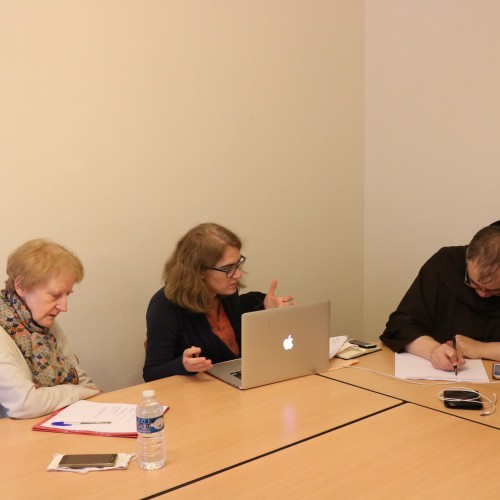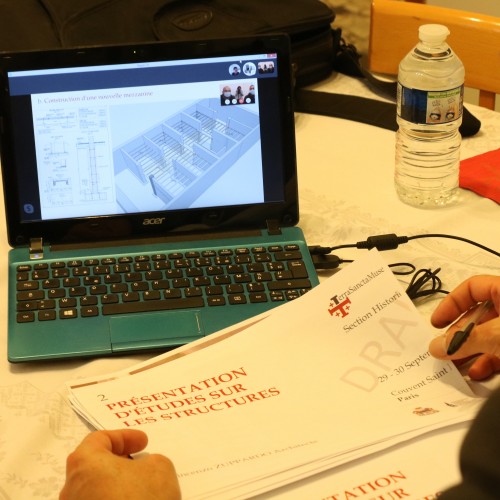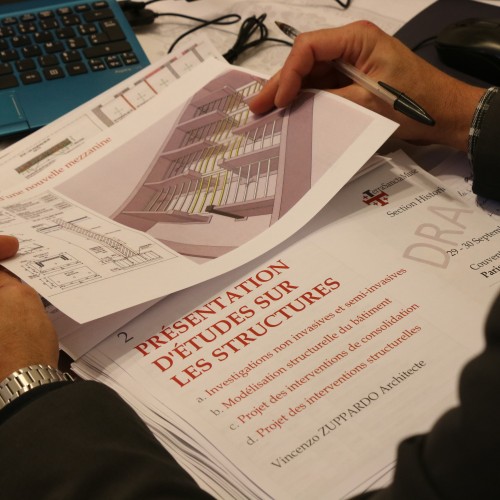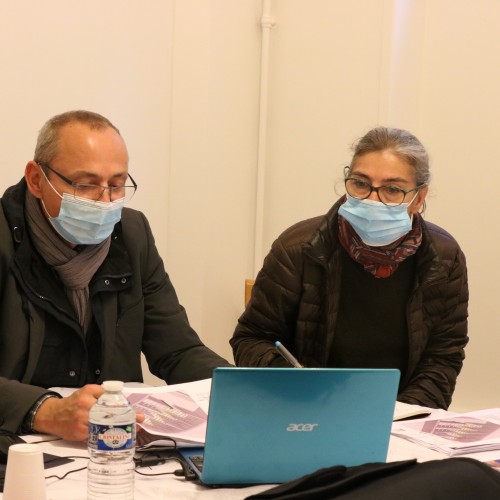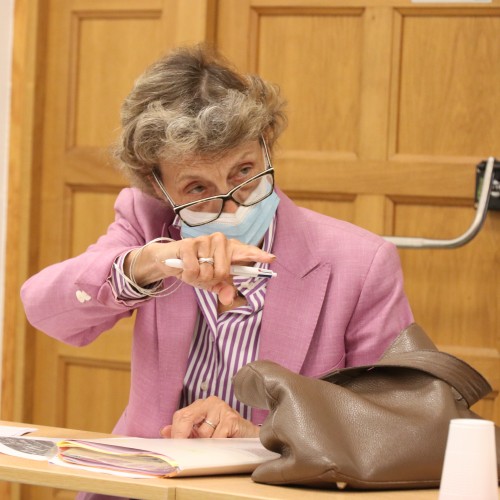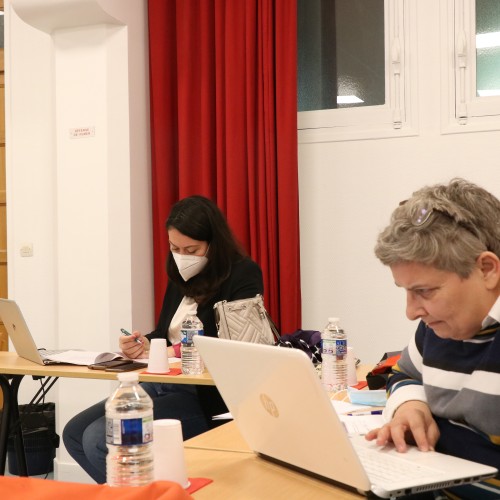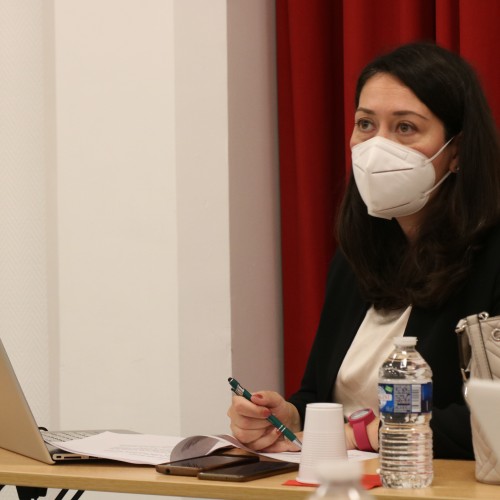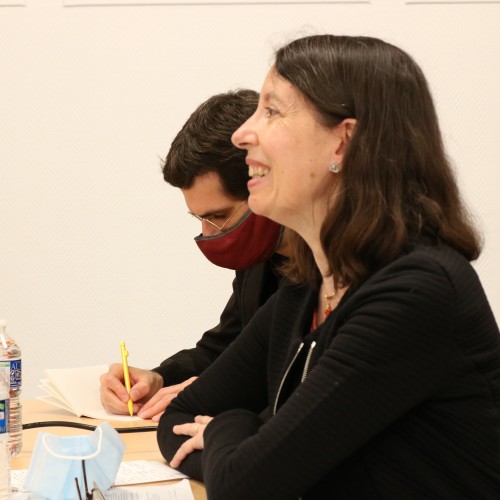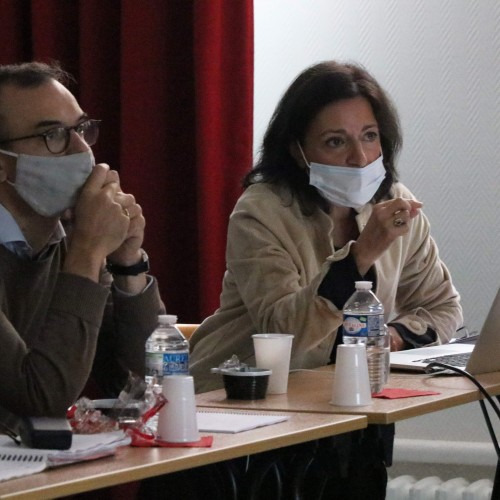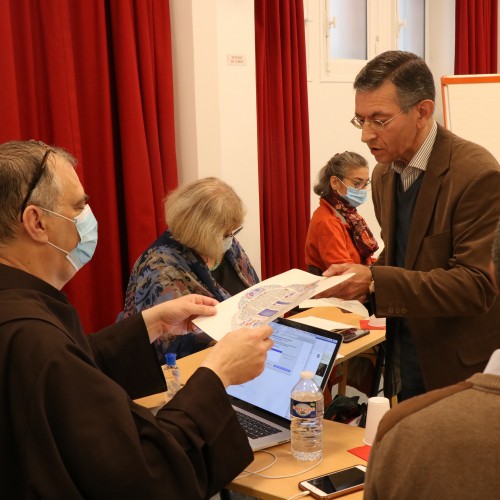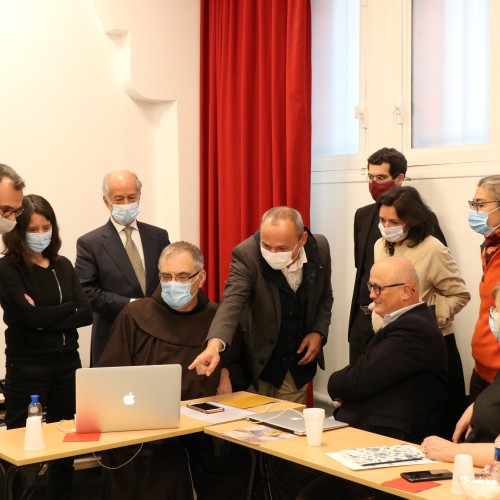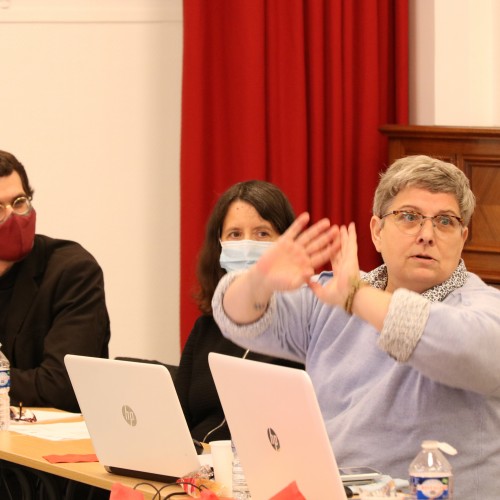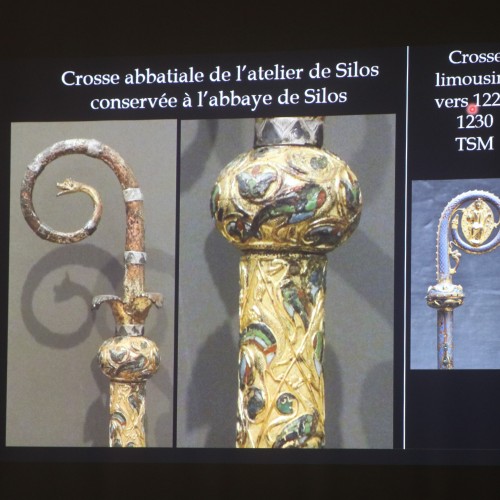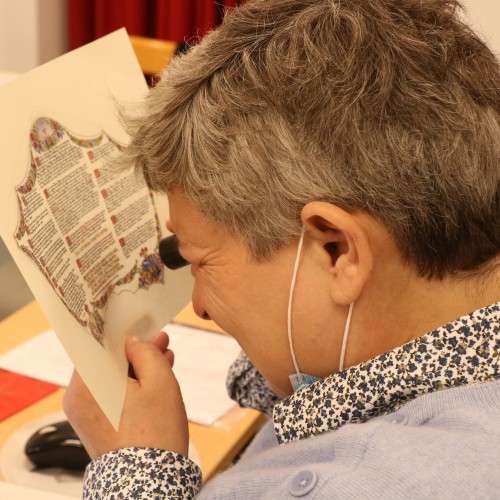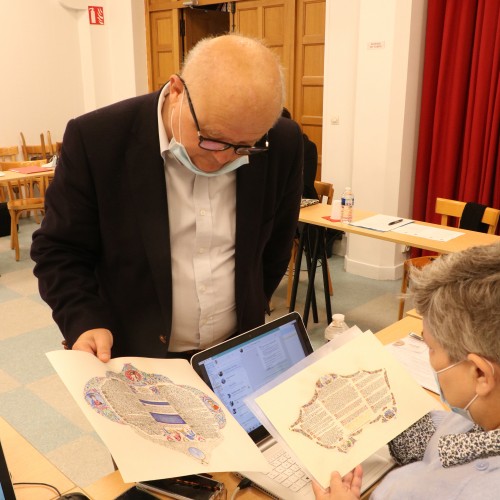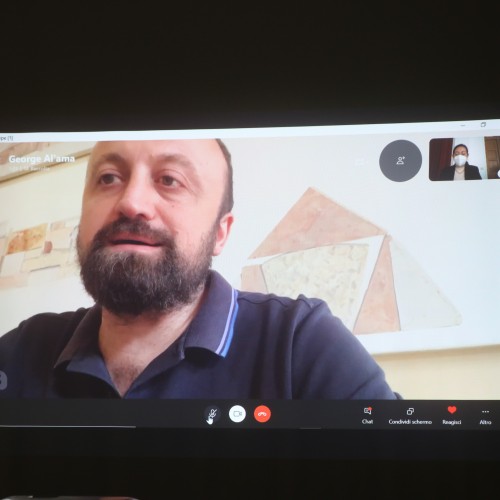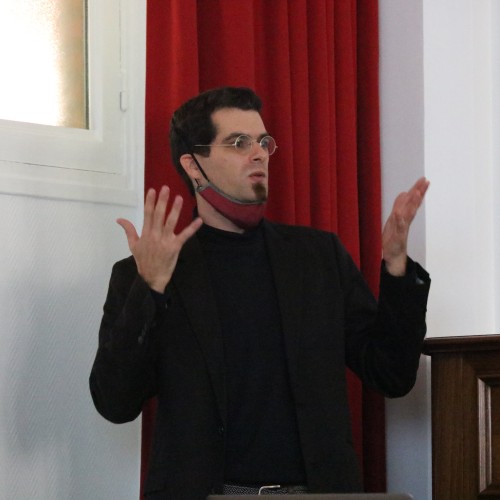In spite of Covid-19, reflection and work continues at the Terra Sancta Museum
Exceptional health situation, exceptional scientific committee. On Tuesday 29 and Wednesday 30 September 2020, the 6th working session of the Terra Sancta Museum’s Scientific Committee was held in Paris. Many European members were unable to travel to the French capital and it was thanks to technology that they were able to make their contributions.
One committee, four commissions
The first day was organized in four working groups: publications, mediation, museum operations and works. “The idea of working in sub-groups had already been raised in previous committees, Béatrix Saule made it a reality and it’s a very interesting experiment,” explained Father Stéphane Milovitch, who traveled from Jerusalem. He continues: “We are in a phase of work that requires us to discuss and examine in detail certain issues such as the human resources needs of the future museum, the training and qualifications of future teams, the management, the role of the Fathers in this new complex, the security of the museum… This is all new for the Franciscan that I am, we are not museum managers! These exchanges do not yet allow us to provide ready-made answers and it will obviously take time and “tailor-made” solutions for the Terra Sancta Museum. However, they do allow us to raise many questions, to think about the museum as a whole, to set ourselves deadlines. This is very structuring and reassuring”.
Jérôme Dumoux, scenographer of the historical section and head of the “works” commission shared at the end of this first afternoon of work: “The first studies that have been carried out – on the issues of rainwater evacuation and humidity – will enable us to make technical choices to prevent all risks of flooding and to clean up the spaces in order to protect the works. The second studies presented to us by the Technical Office in Jerusalem concern the structural feasibility of the scenography project: flooring, destruction of partitions, openings between certain rooms. They confirm the feasibility of the project without any questioning, which we feared for certain specific points along the way! ». These studies are only a starting point, Vincenzo Zuppardo – the project’s architect based in Jerusalem – also announced the upcoming realization of a complete scan of the entire building (the museum but also the church above and the cisterns in the basement).
A little further on, the discussion was animated under the direction of Béatrix Saule who was immersed in the drafting of the room panels of the future historical section. “Who are we addressing? Pilgrims, local Christians, the Jewish and Muslim world, non-believers? “asked Marie-Armelle Beaulieu, editor-in-chief of Terre Sainte Magazine, whose participation in this commission was greatly desired. Between taking into account the Christian identity of the museum (owned by the Franciscans) and the desire to teach visitors something new, the balance is not easy to find. “Too scientific, too theological, too connoted, impossible to translate into other languages…” adjectives and synonyms are used. The debate continues with Gabriele Allevi, to whom the multimedia of the future museum has been entrusted. From Milan and with the Studio Base 2 agency, he presented a first project for the multimedia of the immersive room dedicated to pilgrimages.
From discovery to discovery
The second day was devoted to the reports of the commissions. A mode of operation that seems to have seduced all the members of the committee for its efficiency. The committee therefore noted the continuation of the reflections within these four commissions with a single plenary assembly (instead of two) throughout the year. The committee also had the pleasure of welcoming and thanking Anne Dion, Curator of the 19th century collections at the Musée du Louvre’s Department of Fine Arts, who has agreed to take charge of the second goldsmith’s catalog (19th, 20th, and 21st).
Several experts then followed one another for different communications. Thus Olivier Naude – painter and illuminator – was able to present the fruit of his work still in the process of completion: the composition of miniatures to dress the altar canons – “these memory aids” as Olivier Naude likes to say – in mother-of-pearl from Bethlehem. “My work is to make the infinitely small but never forget that it must remain an expressive painting as small as it is, not fly’s legs! “comments the artist who works on formats ranging from 10 to 20 centimeters at most. “Illumination is first of all line, a drawing, then gilding and painting. The first order from the Terra Sancta Museum represents more than 400 hours of work! ». And one can only be ecstatic about the finesse of the calligraphy and the painted motifs. On one of the pieces, there are more than 260 flowers and buds! Despite the smallness of the motifs, the artist has managed to give each flower a certain volume, reviving the tradition of the copyist monks of the Middle Ages.
Florian Meunier, Chief Curator at the Louvre Museum for the High Middle Ages and Romanesque Art, then spoke for a thorough examination of the pair of candlesticks and the crosier from the Treasure of Bethlehem. After having been able to study similar works at the Silos Abbey in Spain, at the Louvre and in Cluny, the specialist was keen to point out that the enamels that were commonly attributed to the Limousin workshops would appear to have come from the itinerant workshop in Silos. How did these works and artists arrive in the Holy Land? The question remains open for the specialist, who remains in admiration of the unique motifs on the candlesticks of Bethlehem, fantastic animals that cannot be found anywhere else.
David Catalunya, a researcher at Oxford University and the Max Planck Institute for the History of Science in Berlin, then shared his five-year European research project: “Sound technologies of the Latin Christian Church 900-1300“. His goal: to write the history of medieval organs, analyze their design and manufacturing processes in order to reproduce them and hear them play. The Bethlehem organ of the 12th century – one of the museum’s masterpieces – could not fail to attract the attention of this fine connoisseur. While waiting to hear the sounds of this centuries-old organ, David Catalunya’s knowledge has already made it possible to propose a hypothesis of reconstructing the form it had at that time! A precious contribution to the scenography of the exhibition, which is intended to be as realistic as possible.
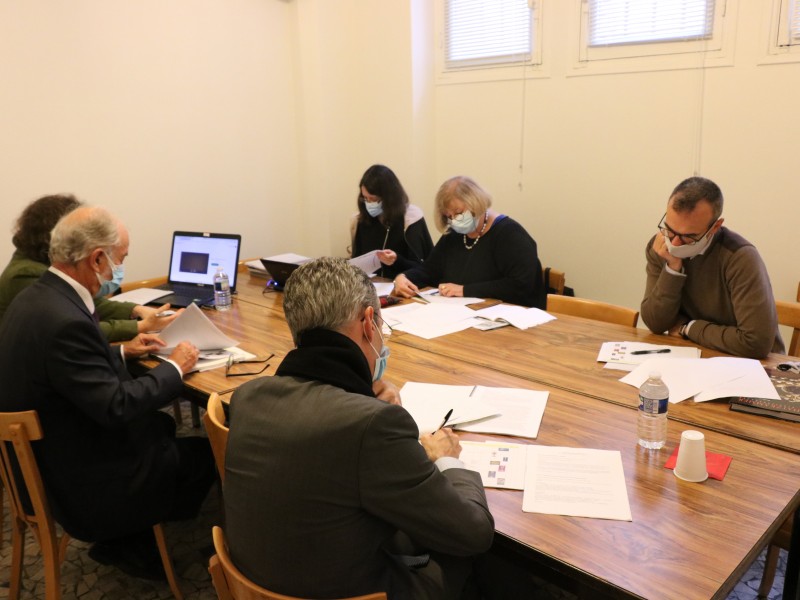
A museum at the service of a plural history: local and universal
George Al’Ama, a Palestinian collector, presented, live from Bethlehem, a recent discovery in the Custody’s collections: 25 pieces including wedding headdresses embroidered and covered with silver and coral beads as well as silver necklaces from some forty villages around Hebron and Ramallah. “Rare pieces that bear witness to the history of women in Palestine since these precious objects were passed down from mother to daughter and very few of them remain today,” describes this art enthusiast. “How did they arrive in the Custody’s collections? Was it a gift or an offering to the Franciscan priests? “asks George Al’Ama, who intends to answer the question. “These works enrich the purpose of the museum and could also bear witness to a local act of faith,” reacted Father Stéphane.
Raphaëlle Ziadé, Curator of the Byzantine Department of the Petit Palais, then presented a miniature reliquary box and a pilgrimage belt buckle, “new souvenirs of pilgrimage from the 6th-7th century coming from Jerusalem”. The bone reliquary box with a cross engraved on the face evokes the cross of Golgotha details Raphaelle Ziadé. It has the peculiarity of being painted inside and according to the curator there are only three other similar objects known: one is in Israel and the other in Jordan. “We are in front of a kind of small “amulet” of pilgrims coming from Jerusalem, what did it contain? Perhaps some soil of the Holy Land,” she says. Father Stéphane, who welcomes thousands of pilgrims to Jerusalem on a daily basis, comments: “These two objects show the devotion of the pilgrims of the last centuries, what they used to leave the Holy Land with. While what used to arrive in the Holy Land is very well documented, we know very little about what used to leave. This seems to me very interesting for the knowledge of the history of the pilgrimage”. Yet another new object that could enrich the collections of the historical section!
Finally, Marie-Armelle Beaulieu, shared a quick study of the history programs taught in Palestinian and Israeli schools. Very circumscribed teachings that left the committee perplexed and highlighted very different cultural referents. This is a reality that Sara Cibin, from the association Pro Terra Sancta, in charge of a European project underway in the first – archaeological – section of the museum: “Terra Sancta Museum: A Community Living Museum for Palestinian Youth“, is already facing. Among its objectives: to collaborate with Palestinian public and private schools located in East Jerusalem to raise awareness among more than 10,000 young Palestinians about the diversity of their identity and heritage while introducing them to cultural practices. These are all efforts and experiences that the scientific committee welcomes and intends to take into consideration in its reflection and mediation strategy with local populations.

